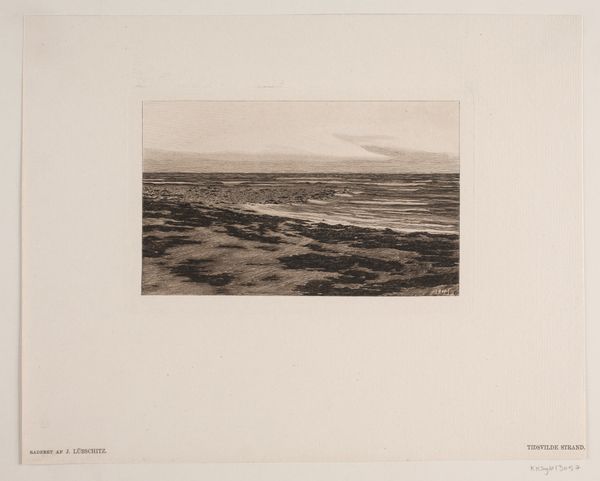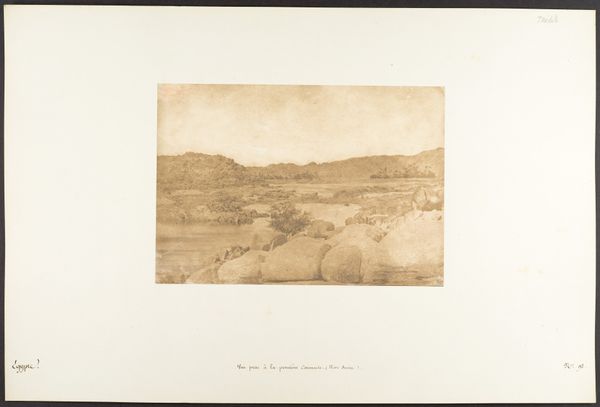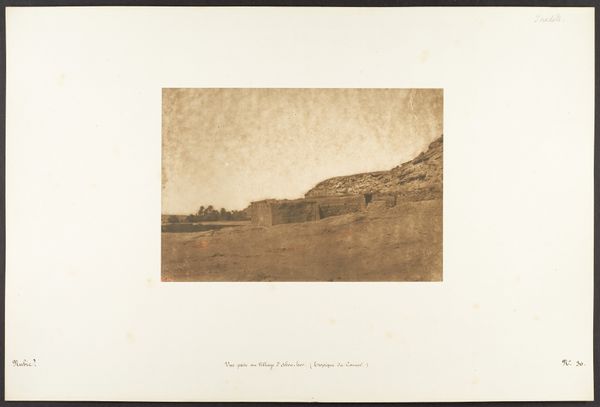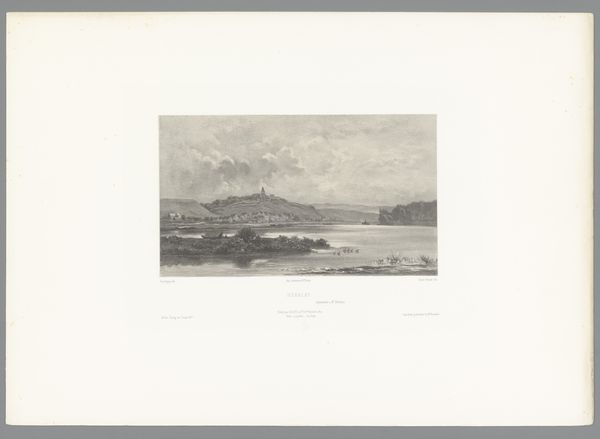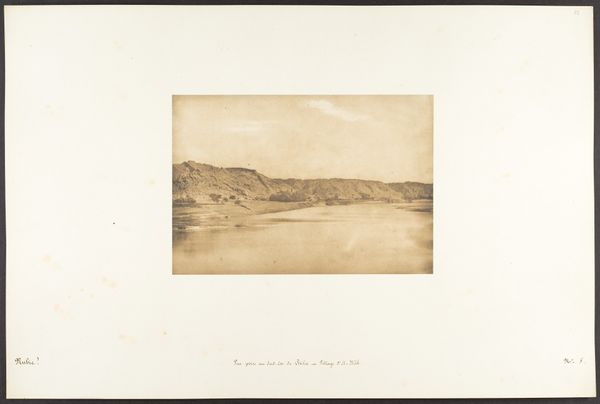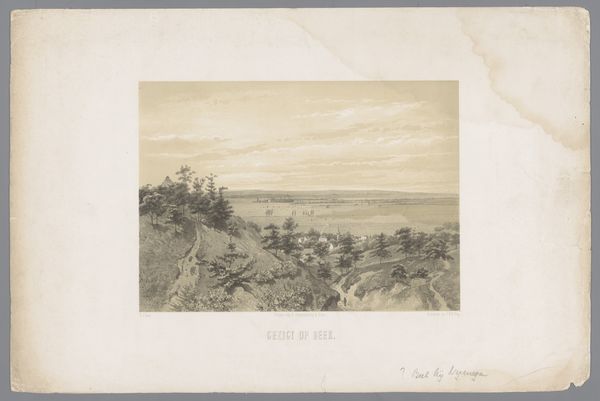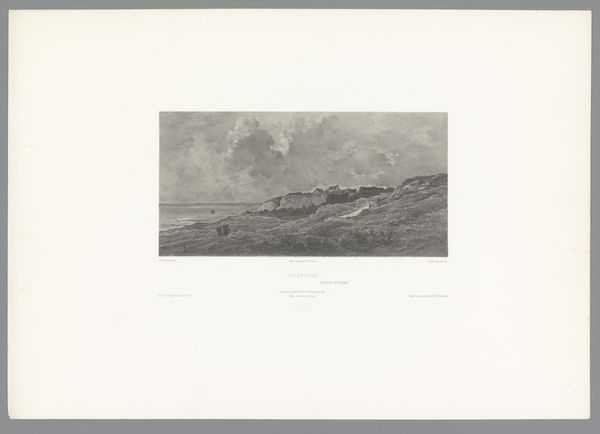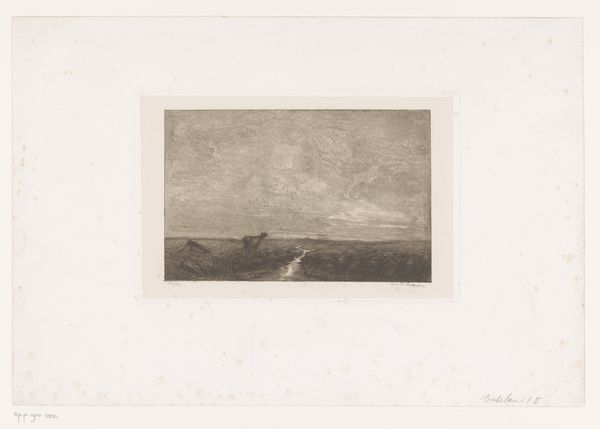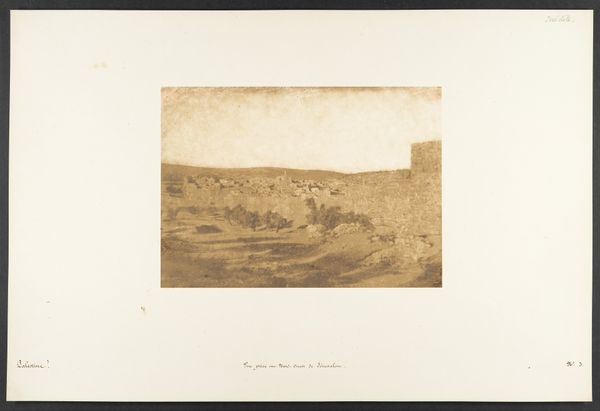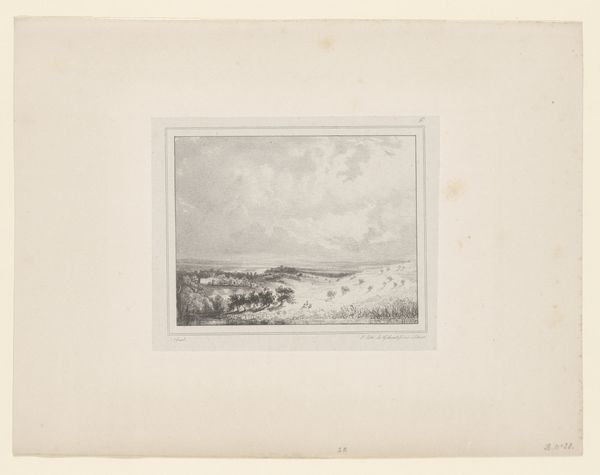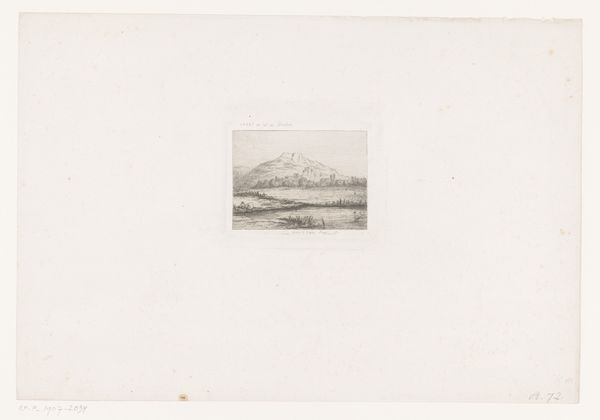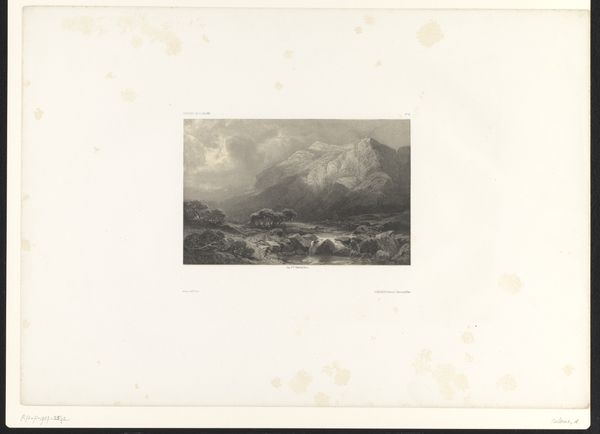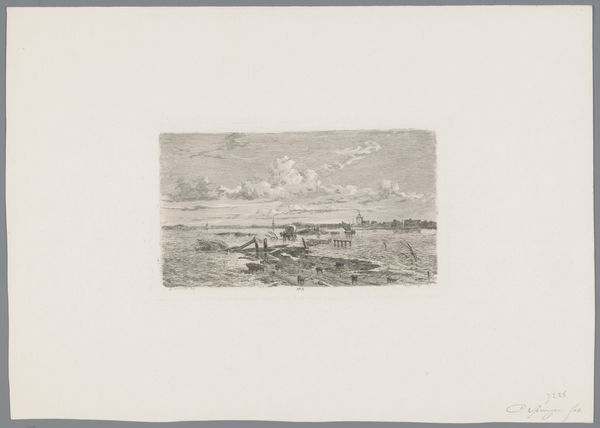
print, pencil, engraving
#
pencil drawn
# print
#
pencil sketch
#
landscape
#
pencil
#
pencil work
#
engraving
#
realism
Dimensions: height 180 mm, width 275 mm
Copyright: Rijks Museum: Open Domain
This is J. Jung’s depiction of Rolandseck and Nonnenwerth, captured through etching. Notice how the river, acting as a serpentine form, cuts through the landscape. This motif has ancient roots, echoing the Ouroboros—the snake eating its own tail—a symbol of cyclical time and eternal return. We find similar river motifs winding through ancient maps and mythological illustrations, symbolizing life's journey and transformation. Jung’s image stirs a deep, subconscious recognition. The river is not merely a geographical feature; it is a potent symbol engaging our collective memory. As the river carves its path, it reminds us that history is not linear but a continuous flow. The river connects us to a past where landscapes were imbued with spiritual significance, resonating even now in our modern psyche. The cyclical nature of the river’s path reminds us that symbols evolve but are never truly lost. They resurface, transformed by time and culture, yet retaining the power to evoke profound emotional and psychological responses.
Comments
No comments
Be the first to comment and join the conversation on the ultimate creative platform.
